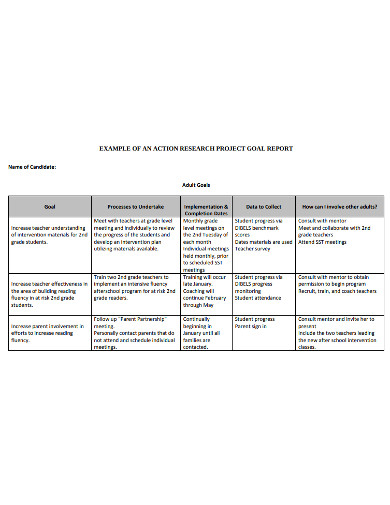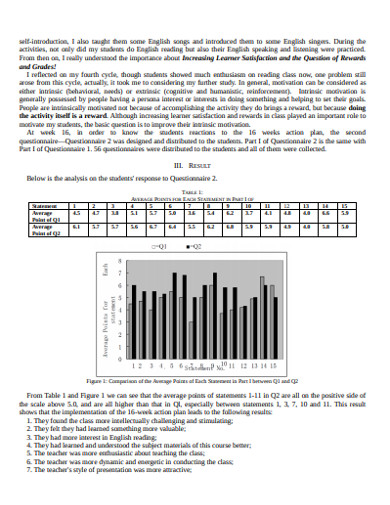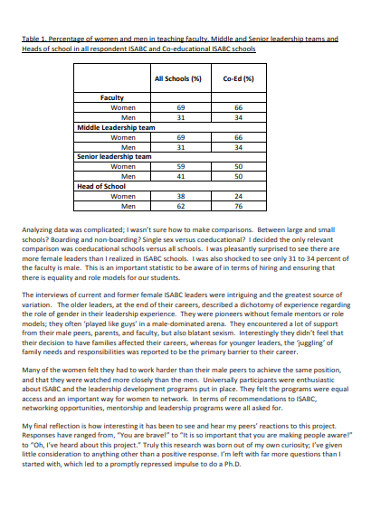Action Research Report Examples
More academic institutions are coming to terms with the idea that education is not a one-size-fits-all system. However, an issue with the new teaching methods is that we can’t keep employing diverse techniques without the certainty of its effectiveness to improve learning. Changing a system that has stuck with the same blueprint for over a hundred years can only be done when we have sufficient proof that the proposed changes are better. Today, we can find that proof in action research reports.
Action research is a systematic inquiry and evaluation of the initiatives on improving practice, curriculum, or interaction. This is generally done by people in the respective fields. It is best known in education, where it validates the effectiveness of a learning method.
In contrast to some of the more traditional research methods, action research doesn’t remove the subject from its natural environment. Investigation occurs in the context of which the subject exists. Whereas, traditional research often extracts the subject into an observable vacuum or controls its environment.
An Antiquated System
The Industrializing Revolution
The Industrial Revolution is fundamentally new energy sources, like coal, oil, and natural gas, making way for automated work and better modes of transportation that carried the world to where it is now. As societies transformed, so did our priorities. We saw better opportunities in working for industries and started leaving farms and fields in search of greener pastures.
In an industrializing society, we placed priority on market production and economic value. This view reflects how we designed our schools to raise children for this kind of environment. Education wasn’t about learning and celebrating one’s individuality. Schooling was similar to mass production in factories: the cookie-cutter model of learning.
The Factory Setting
Over a century has passed, and there are still schools in the country that follow this blueprint from over a hundred years ago. The linear information transfer teaching method encourages a role-play between the teacher, who is the authoritative figure, and the students, the submissive figure. Schools give the students a rigid template of learning, and the latter should conform to the set structure or be labeled a failure. This format is void of authentic classroom engagement and multi-directional interaction, which plays a large part in learning.
The education system during the Industrial Revolution was essentially about schools producing a qualified labor force with the proper work ethic. But, it did give us 12 years of free public education. At its core, the system brought education for all.
Reset by Research
Today, we are making significant strides in encouraging authentic learning in schools. Academic institutions have looked into teaching methods and classroom models that free students from outdated assumptions of instruction. Educators should update their planners on how to best deliver education to their students.
Educational Revolution
Educators are integrating interactive technology into their lesson plans. Teachers are experimenting with different methods of instruction in and out of the classrooms. Some schools are using tablets and computers for teaching. Schools are also redesigning their spaces, like classrooms and libraries, to foster 21st-century learning. These changes aren’t based on spur-of-the-moment assumptions but on what research papers reported about learning.
According to research, classes that are taking advantage of collaborative learning encourage students to be more participative in the discussion. Active engagement also hones leadership skills, communication, and critical thinking. Schools are adopting peer learning because of the positive effect of student-teach-student on the understanding of a concept.
On that thought, schools are also rethinking the design of the physical learning spaces to house learning. A study states that classroom design influences student engagement and allows for active learning strategies. Other academic spaces, like libraries, can also benefit from restructuring makes studying conducive for students.
4+ Action Research Report Examples
The following are examples of action research reports that you can use as guides in preparing your research.
1. Teacher Action Research Report Example
2. Action Research Project Report Example
3. Action College Research Report Example
4. Action Research Programme Report Example
Writing Your Action Research Report
In exploring different teaching methods and learning strategies, educators should also monitor and evaluate the progress of each method for effectiveness. While a research plan can work in theory, action research reports let you see the real effect of the method.
1. Spot a Problem
First, you have to identify an issue that you wish to address. There are a handful of problems in the educational system, and several of these may be plaguing your school. Although you might want to solve them all, focus on one problem at a time. When you have identified a specific issue, you can research on applicable theories that can help you create a solution. The problem with dealing with multiple issues is that it can be confusing, and you might lose focus.
2. Plan your Steps
You can utilize an action plan for this. Include in the document how you intend to design and frame your study. Indicate the research methodology and justify your strategy. Identify the sampling frame and sample size of your research. Because action research investigates a subject in the natural environment, it is important to select participants that are part of that environment. Before you begin your research, you should already have a sound mental map of how the study will unfold.
3. Gather Relevant Data
How do you quantify learning to know if the learning strategy is effective? It can be hard to remain objective in describing success. In this case, you can use different types of data gathering. Look at your data through different perspectives. You can use data from observations, class records, and interviews with the participants. This approach is known as the Triangulation Method, and it helps in the overall confidence of your results.
4. Implement and Monitor
Carry out your plan and keep tabs on the progress of the study using Gantt charts. Using your success indicators and the performance criteria you opted to use, determine if the learning strategy helped the students in their academic performance and classroom behavior. The assessment portion of the study is a crucial part since it can provide a definitive evaluation of the strategy you employed.
Through research, we are reinventing education by acknowledging what schools failed to understand for over a century. Be part of this educational revolution one action paper at a time.






